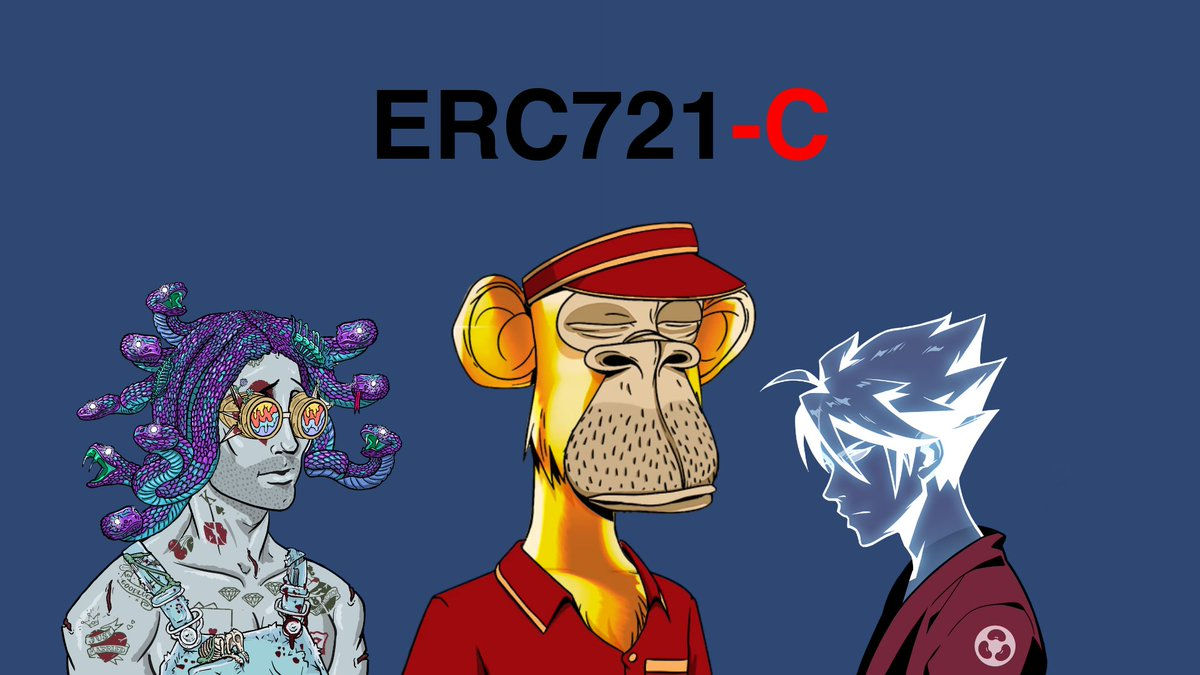What is ERC 721C? ERC 721C is a new type of standard created to effectively enforce on-chain royalties. So what’s special about ERC 721C? Let’s find out with Weakhand in this article.
Before jumping into the article, everyone can refer to some of the following articles to understand better:
- What is ERC 721? Standard for NFTs on Ethereum
- What is ERC 721x? Implement the ERC 721 standard more securely
- What is ERC 1155? Harmonious combination between ERC 20 and ERC 721
- What is ERC 6551? The new standard is a game changer in the NFT space
What is ERC 721C?
What is NFT licensing fee?
NFT royalty fees are payments paid to creators each time their work is sold on the secondary market. Royalty fees can vary depending on each NFT collection, but a rate of 5-10% of the sale price is generally considered standard. For larger NFT collections, lower royalty fees of around 2.5% are common.
For example: An NFT collection has a 10% royalty fee on OpenSea and currently the floor price for the collection is 20 ETH. A user wants to sell 1 NFT from a collection at a floor price on the OpenSea marketplace. In addition to transaction fees, he must pay a royalty fee of: 20 * 10% = 2 ETH for each sale of his NFT.
Overview of the ERC 721C standard
Because NFT royalties were not built into the core ERC 721 standard from the start, royalty implementation across NFT Marketplaces has been inconsistent. So the ERC 721C standard was created to solve this problem by providing a solution to effectively enforce on-chain royalty fees.

What is ERC 721C
Developed by game company Limit Break, ERC 721C allows creators to set new rules for royalties on their chains. Simply put, this new standard makes it possible for artists and developers to create a type of licensed Smart Contract that dictates where and how royalties are transferred.
Essentially, ERC 721C allows creators to choose where to sell NFTs and empowers them to filter interactions only from the contracts and applications they choose. Traders cannot circumvent royalties by using other platforms that do not charge fees, as any collectibles created using the ERC 721C standard can opt out of trading on such NFT Marketplaces. .
How Does ERC 721C Work?
With ERC 721C, creators can establish royalty policies for the NFTs in their collections. These policies include the following information:
- Copyright rate: The percentage of the NFT sale price that the creator will receive.
- Allowed locations: NFT Marketplaces where NFTs can be traded.
- Copyright recipient: Parties other than the creator may receive copyright, such as communities, partners or agencies.
When an NFT is traded on an ERC 721C compliant marketplace, copyright policies are automatically enforced. NFT creators will receive royalty fees at a set percentage.
Additionally, ERC 721C offers several advantages over other NFT copyright standards including:
- Can be expanded: ERC 721C can be used to create complex and flexible copyright policies.
- Compatible: ERC 721C is fully compatible with existing NFT Marketplaces on the market.
- Programmable: ERC 721C can be used to create custom Smart Contracts for copyright management.
ERC-721C is still in development but it has already been adopted by many NFT creators and the NFT Marketplace. It is considered an important standard for the future of NFT copyright.
ERC 721C Use Cases
ERC 721C is a potentially revolutionary new NFT standard that gives NFT creators greater control and customization, while also making royalty fees more viable. Here are common use cases of ERC 721C:
Base royalties
This is the most basic use of programmable royalties, in which creators can set fixed or variable royalty fees depending on the conditions and purposes for which the creator NFT coined the original.
Royalties are shared
Typically, creators earn all of their revenue from their royalty fees. However, now NFT creators can divide the royalty fee to a number of stakeholders such as: Early NFT purchasers, people who are active in the community,…
Royalties are for Minter only
NFT creators can also offer 100% royalties to users who join NFT mints at an early stage. In this case, the royalties are immutable and allow NFT minters to set their own royalty rates.
Royalties are transferable
NFT creators can grant their NFT owners a private NFT, granting the owner the right to royalty income. For example: When a person mints “NFT
summary
ERC-721C has the potential to revolutionize how royalties are managed and more appropriately used for NFTs. It will help NFT creators generate more revenue from their work and encourage fans of NFTs to participate in the community. Above is all the information I want to introduce about ERC 721C, hope everyone has received useful knowledge.


